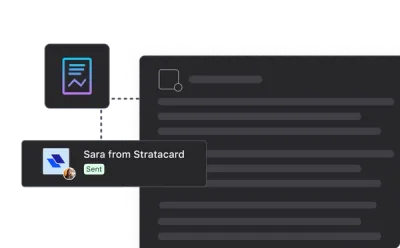
What is a restricted stock unit?
Restricted Stock Units or RSUs are forms of compensation issued to employees by an employer founder. This compensation is issued in restricted company shares. Shares are restricted because their value is limited by a vesting plan. After a set amount of time laid out in a vesting plan occurs, a certain amount of shares becomes accessible and valuable. RSUs give employees interest in a company but will not be worth their full value until the full vesting period is complete. RSUs will always have value due to their underlying shares.

What is a restricted stock award?
Restricted Stock Awards or RSA’s are given to the employee on the day they are granted. They do not have to be earned via a vesting schedule like RSUs do. The employee “owns” the stock associated with the RSA on the grant date. However, they may still have to purchase them, depending on the nature of the offer. This purchase contingency is why RSAs are considered “restricted stock”.
RSUs vs RSAs for startups
Overall, restricted stock in the form of RSUs or RSAs can be a value-add for startups and a great way to incentivize talent employees to join the team. RSUs are not purchased at grant date but instead have a timed vesting period as well as other vesting conditions before they are owned outright. RSAs are purchased on the grant date but still typically have time-based vesting conditions. Unvested RSUs are given up when an employee is terminated and RSAs are available for repurchase when an employee is terminated. RSAs are typically granted to early employees before funding rounds with additional equity payouts and RSUs are typically granted to employees after funding is taken on.
What the differences are important to understand
RSUs and RSAs are two common terms to understand in the startup landscape. RSU stands for “Restricted Stock Unit” and RSA stands for “Restricted Stock Award”. Understanding the difference is key when building and operating a startup.
While both RSUs and RSAs are forms of restricted stock, they are different and serve different purposes. In general, restricted stock is owned from the day it is issued and does not need to be purchased. However, because it is restricted, it needs to be earned.
How do restricted stock units work?
RSUs became popular in the early 2000s after a variety of executive fraud scandals occurred across the market. With it’s vesting limitations, RSUs have become a popular option for compensating leadership and early employees without the risk of providing full stock upfront.
RSUs give an employee interest in company stock but they have no tangible value until vesting is complete and typically vesting plans are staggered so that only a certain percentage of shares vest at a time. For example, if an employee has a 4 year vesting period with a 1 year cliff, they would only walk away with 25% of their promised shares after a year of employment (or none if they leave or are terminated prior). RSUS are also structured with limits in case termination occurs that can override vesting or cliff rules. The restricted stock units are assigned a fair market value when they vest. When RSUs finally vest, they are considered income, and a portion of the shares is withheld to pay income taxes. When the employee receives the remaining shares and can sell them. If an employee is terminated, they keep any of their vested shares but the company can purchase back the unvested shares.
Like any potential compensation option, RSUs have pros and cons to their structure and offering.
Some Pros of offering RSUs include:
- Long Term Incentive – because of the standard vesting period of 4 years, generous RSU packages can be helpful in incentivizing top talent to stick around longer, put in more effort to grow the company, to ultimately claim their full offering of stock at the highest possible value.
- Low-Impact: The admin work and back-end management of RSUs is minimal compared to other, more complicated stock incentive plans. RSUs also allow a company to defer issuing shares until the vesting schedule is complete. This helps delay the dilution of its shares.
Related Resource: Everything You Should Know About Diluting Shares
Some Cons of offering RSUs include:
- No Dividends: Because actual shares are not allocated, RSUs don’t provide dividends to the stock holders. However this means that the employer issuing the RSUs needs to pay dividends in an escrow account that can help offset withholding taxes or be reinvested. This is something to keep in mind as a potential founder offering RSUs.
- Income Restrictions: RSUs aren’t taxable until they vest. So employees can’t pay taxes before vesting as the IRS doesn’t consider unvested RSUs to be tangible property.
- Shareholder Voting Rights: RSUs don’t grant the shareholder voting rights or input into the company until they are fully vested.
How do restricted stock awards work?
Restricted Stock Award shares are given to the employee on the day they are granted. While RSUs are more commonly awarded to general employees, RSAs are more common with early employees at a startup before the first round of equity financing. Instead of a timed out vesting period that portions out the stock like in an RSU, an RSA is the lump sum awarded on one date (although that may still be time-based).
Vesting still applies in a different way to RSAs. Vesting only impacts a receivers RSAs if they are terminated or leave the company allowing the company to potentially purchase back the shares. The vesting is less about the employee owning the stock as the RSA is owned but about the ability to retain what is owned. However, there are usually time-based rules associated with RSAs so that the shares may expire if certain requirements, specifically financial requirements, aren’t reached. Most companies have vesting schedules in place to prevent individuals from joining a company, receiving their RSA award, and leaving immediately.
Most RSA pros and cons are fairly similar to RSUs as RSAs are simply another form of restricted stock.

How are restricted stock units taxed?
With restricted stock, it’s important to consider two types of taxes: regular income tax and capital gains tax. Taxing on restricted stock is complex but the basic underlying factor of income still applies – anything that a company pays an employee is taxable.
For RSUs, regular income taxes are paid when the recipient shares vest.
How are restricted stock awards taxed?
For RSAs, the receiver has to pay for them outright so when the vest date rolls around there are no additional taxes to pay on the shares themselves unless they change value. The RSA receiver will only need to pay taxes on the gains in value of the shares. The tax on gains between grant date and vesting will be income tax. The tax on gains between vesting and sale of those shares will be capital gains tax.
An election called the 83(b) election can be selected on a tax form which means the recipient can pay all their ordinary income tax upfront. The 83(b) election is eligible for RSAs not RSUs.




